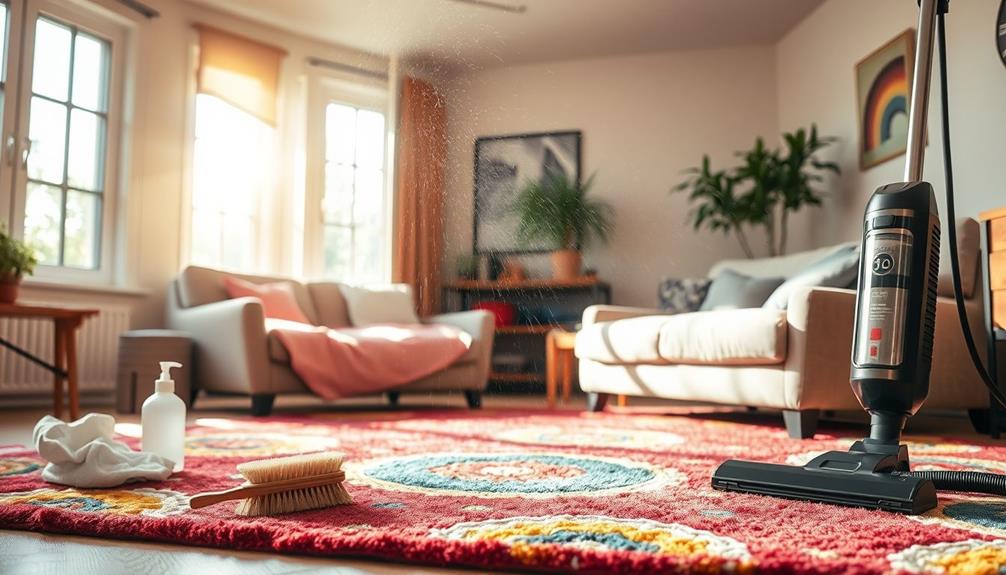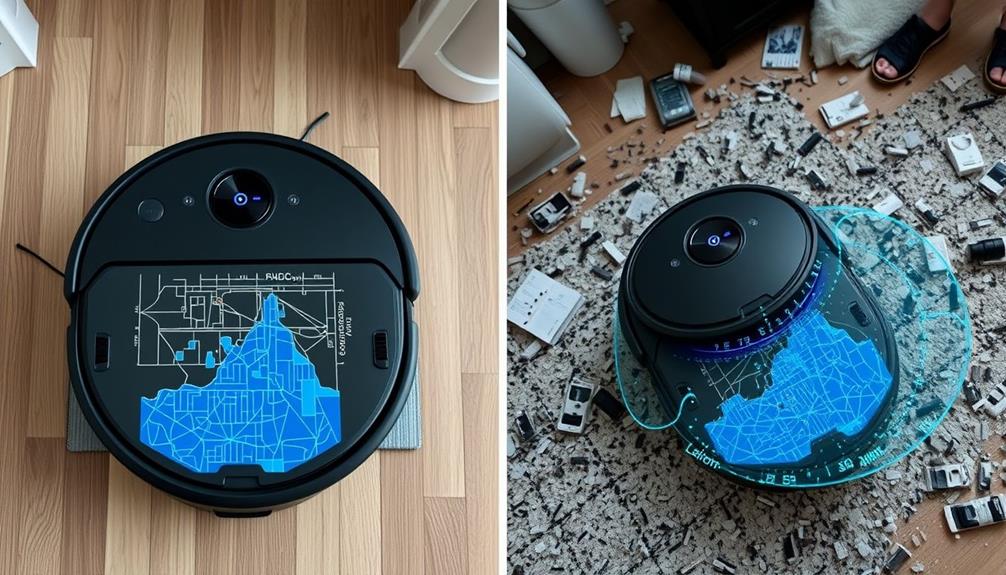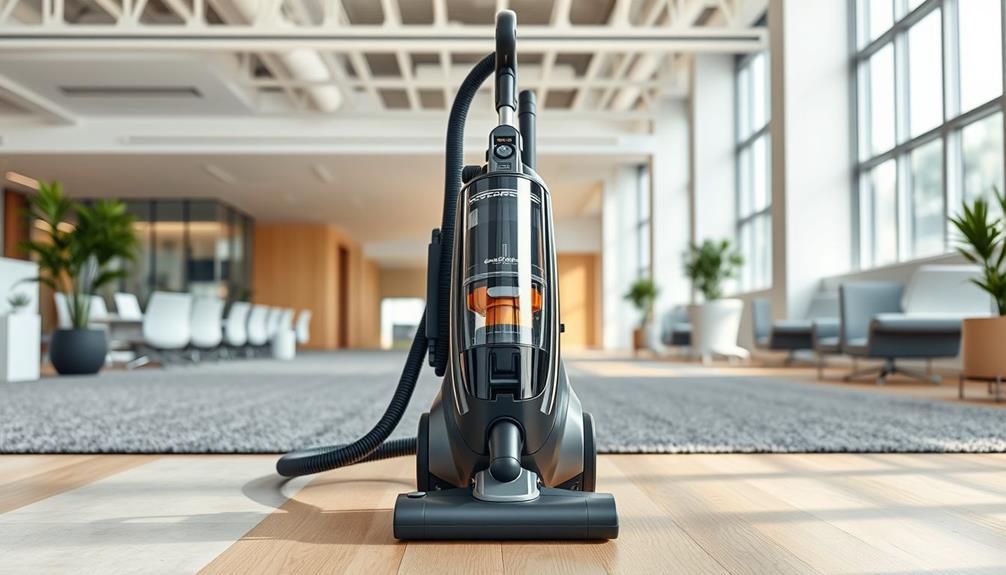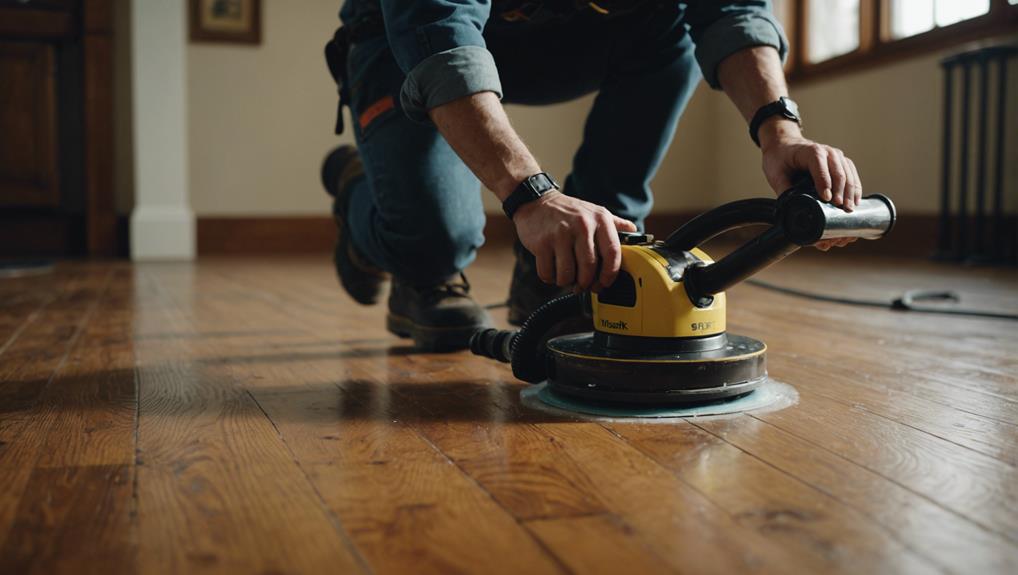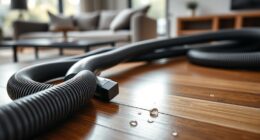In order to effectively clean your area rugs and delicate carpets, it is important to first identify their materials – wool, silk, synthetic fibers, or natural options – as each requires different care methods. Start by vacuuming the rugs to remove dust, then use a gentle cleaning solution such as mild detergent mixed with warm water for synthetic fibers or a vinegar-water mix for stains. Always test any cleaner on a hidden spot before applying it to the entire rug. Allow the solution to sit, rinse thoroughly, and air dry the rug flat. For deeper or stubborn cleans, consider seeking professional help. There are various ways to ensure your rugs remain beautiful and long-lasting.
When it comes to vacuuming silk rugs, it is essential to exercise extra caution as the delicate fibers are easily damaged. Use a vacuum with a brushless suction head to gently remove surface dirt. Avoid using any cleaning solutions on silk rugs as they can lead to discoloration or damage. If your silk rug requires a deeper clean, it may be best to consult a professional cleaner specializing in delicate textiles. By properly caring for your area rugs and carpets, you can preserve their beauty and extend their lifespan for years to come.
Key Takeaways
- Regularly vacuum both sides of area rugs to remove dust and debris, preventing dirt from embedding deeper into the fibers.
- Use mild detergents mixed with appropriate water temperatures for cleaning different rug materials to avoid damage.
- For spot cleaning, act immediately by blotting spills with a clean cloth and applying a vinegar-water solution for effective stain removal.
- Always test cleaning solutions on a small, inconspicuous area to ensure no discoloration or damage occurs before full application.
- Consider professional cleaning every 2-5 years, especially for delicate rugs, to maintain their beauty and extend their lifespan.
Understanding Area Rug Materials
When it comes to choosing the right area rug, what materials should you consider? You have various options, including wool rugs, synthetic fibers, and natural fiber rugs.
Wool rugs are known for their durability and resilience, making them excellent for high-traffic areas. However, they require gentle cleaning methods to avoid damage and shrinking. Incorporating a blend of modern and rustic furniture styles can complement the aesthetic of your wool rug beautifully.
If you're looking for something more luxurious, silk rugs offer beauty but demand extreme care due to their delicate nature; professional cleaning is often necessary to prevent moisture damage.
On the other hand, synthetic fibers like polypropylene and nylon are generally more stain-resistant and easier to clean. They're ideal for busy households or even outdoor use.
If you're interested in eco-friendly choices, natural fiber rugs such as jute and sisal are great options. Keep in mind, though, that they can be sensitive to moisture and require careful cleaning to avoid mold and mildew issues.
Each material has its pros and cons, so understanding these options will help you select the perfect area rug for your space while ensuring it stays in great shape.
Step-by-Step Cleaning Process
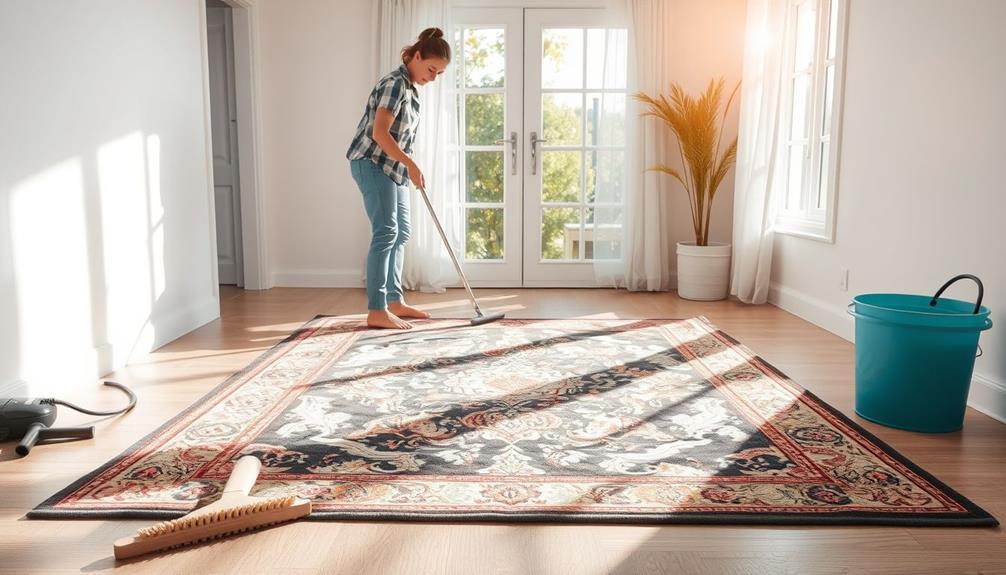
To keep your area rugs and delicate carpets looking their best, a systematic cleaning process is vital. Start by thoroughly vacuuming both sides of the rug to eliminate any dust and debris, as this initial step is essential for proper cleaning. This step prepares the surface for cleaning and guarantees that you avoid embedding dirt deeper into the fibers.
Next, prepare a cleaning solution by mixing mild detergent with warm water for synthetic rugs or cold water for natural fiber rugs. Confirm you use the appropriate temperature for the material type, which is important for effective cleaning.
Using a soft-bristle brush or sponge, apply the cleaning solution gently. Allow it to sit for about five minutes to effectively lift dirt and stains. After that, rinse the rug thoroughly with clean water, making sure all soap is removed; any residue can lead to buildup and discoloration over time.
For best results, consider what to look for in a home cleaning service, especially if you're unsure about handling delicate materials.
Once rinsed, it's time to air dry the rug flat. Flip it to dry both sides completely. Finally, once the rug is dry, vacuum or brush the fibers to restore their original texture.
Effective Spot-Cleaning Techniques

Effective spot-cleaning techniques can save your area rugs and delicate carpets from permanent stains. When a spill occurs, immediately grab a clean, absorbent cloth to blot the stain. Use a gentle dabbing motion instead of rubbing to avoid further embedding the stain.
For effective spot-cleaning, create a cleaning solution using equal parts white vinegar and water. This natural stain remover not only lifts stains but also deodorizes without damaging fibers. Additionally, consider using a vacuum designed for pet hair, such as the Bissell Pet Hair Eraser Vacuum, which enhances suction power for effective hair removal.
Before applying any cleaning solution, always test it on a small, inconspicuous area to verify there's no discoloration or damage. When treating the stain, apply the cleaning solution sparingly with a soft-bristle brush or sponge, letting it sit for about five minutes to help lift the stain. Afterward, blot the area again to absorb any excess solution.
Once you've treated the stain, it's important to rinse the area with clean water and blot again to remove any soap residue. Make sure the rug dries completely to prevent mold and mildew growth.
Tools and Supplies Needed
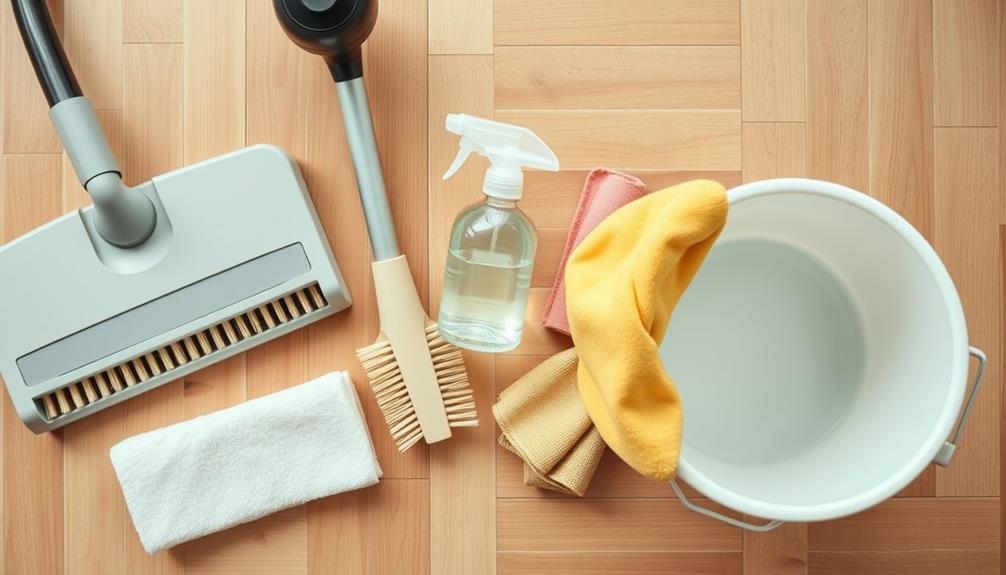
Having the right tools and supplies can make all the difference in maintaining your area rugs and delicate carpets. To effectively clean your rugs while protecting their fibers, you'll need a few essential items.
For instance, using a soft-bristle brush guarantees that you can scrub gently without damaging the delicate textures of your rugs.
Here's a quick list of must-haves:
- Soft-bristle brush or sponge: This is crucial for gently scrubbing your rugs without causing damage during the cleaning process.
- Mild detergent or specialized rug shampoo: Opt for cleaning solutions that effectively remove dirt while being safe for most rug materials.
- Wet-dry vacuum: This tool is invaluable for extracting excess water after cleaning, helping to prevent mold and mildew growth in your rugs.
Don't forget to wear rubber gloves to protect your hands while handling cleaning solutions.
Avoid using harsh carpet cleaners, as they can damage delicate carpet fibers and alter their appearance.
With these tools, you'll be well-equipped to tackle the cleaning process and keep your area rugs looking their best.
Happy cleaning!
Professional Cleaning Considerations
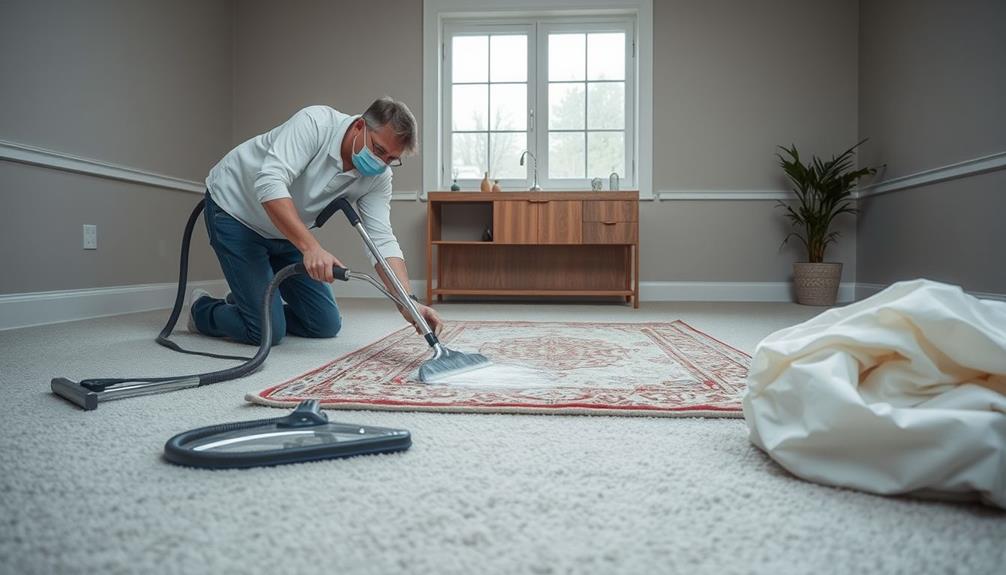
When it comes to maintaining the beauty and longevity of your area rugs, professional cleaning can be a game changer. For delicate materials like silk or antique fibers, experts recommend having your rugs cleaned every 2-5 years. Trained professionals use specialized equipment and industrial-grade cleaning solutions to remove dirt buildup and allergens effectively, ensuring your rugs remain pristine without damaging their fibers.
Here's a quick comparison of professional cleaning considerations:
| Aspect | Benefits |
|---|---|
| Cleaning Solutions | Industrial-grade options for deep cleaning |
| Cleaning Methods | Tailored approaches for different rug types |
| Frequency | Recommended every 2-5 years |
| Stubborn Stains | Advanced techniques for tough issues |
| Lifespan Extension | Prevents deterioration of high-value rugs |
Consulting with professionals for stubborn stains or complex cleaning issues is advisable, as they employ effective cleaning methods that are often unattainable through standard home cleaning. Regular professional cleaning not only preserves the integrity of your rugs but also enhances their appearance and lifespan, making it a worthwhile investment.
Frequently Asked Questions
How to Deep Clean an Area Rug at Home?
To deep clean your area rug at home, start by checking the manufacturer's care label for guidance.
Vacuum both sides thoroughly to eliminate loose dirt.
Mix mild dish detergent with warm water for synthetic fibers or cold water for natural ones.
Test a small area for colorfastness first.
Gently scrub the rug with a soft-bristle brush, let the solution sit, then rinse thoroughly.
Use a wet-dry vacuum to remove excess moisture and air dry it flat.
Should I Wash Rugs on Delicate?
Washing delicate rugs is like traversing a tightrope; one misstep can lead to disaster. You shouldn't wash them unless you're sure it's safe. Always check the care label first.
If it suggests machine washing, use a gentle cycle with cold water and mild detergent. However, spot cleaning with a mild detergent is often the best bet.
Regular vacuuming and immediate stain treatment will keep your rug looking beautiful without risking damage.
How Do You Clean an Area Rug That Says Spot Clean Only?
To clean an area rug that says "spot clean only," mix a mild detergent with water.
Apply this solution directly to the stain using a soft cloth or sponge, being careful not to soak the rug. Gently blot the stain instead of rubbing it, as rubbing can damage the fibers.
After treating, use a clean, damp cloth to remove any soap residue, and let the area dry completely to prevent mold.
Regular vacuuming helps too!
Can You Clean Large Area Rug With Carpet Cleaner?
Cleaning a large area rug with a carpet cleaner can be a gamble, like playing with fire. You might think it's an easy fix, but those machines can be too harsh for delicate fibers, risking damage or color bleeding.
Instead, check the care label. Spot cleaning with mild detergent and cold water is often safer.
If deep cleaning's necessary, consider hiring a professional who knows how to treat your rug with the care it deserves.
Conclusion
Now that you know how to care for your area rugs and delicate carpets, you can keep them looking great for years to come. Did you know that regular cleaning can extend the life of your rugs by up to 50%? By implementing these cleaning techniques and using the right tools, you'll not only enhance your home's aesthetic but also protect your investment. So, roll up your sleeves and give your carpets the attention they deserve!
